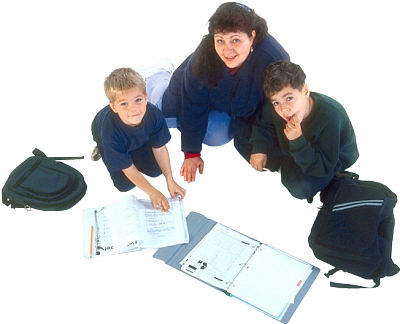1.1 Guiding Principles
As you start your investigation of the developmental domains that impact on learners and the people who teach them, it is important that you understand the principles on which this framework is used in schools:
Learners are capable and competent.
All learners are capable of positive developmental outcomes. People working in education should foster high expectations for all learners, regardless of their age, backgrounds and experience.
Learning and development are multidimensional.
Developmental domains are highly interrelated. Development in one domain influences the development in other domains. For example, developing a learner's language skills (language domain) will impact on their ability to engage in social interactions (social/emotional domain). Education workers cannot consider developmental domains in isolation from each other. The interaction between all areas of development must be considered and planned for.
Learners are individuals who develop at different rates.
Each learner is unique. Each person grows at their own pace. Each person gains skills and competencies at their own rate.
Some learners may have a developmental delay or disability that may require changes to a learning program. In such cases teachers and education support workers should adapt expectations and learning experiences so that the individual learner concerned may successfully achieve a benchmark.
Knowledge of how people grow and develop, coupled with school and learner expectations that are consistent with developmental standards are vital for education workers.
Teachers and education support workers must understand and be consistent on what is expected of learners within the context of that learner's growth and development.
This means that all persons involved in the delivery of learning programs understand what should be expected of a student at a particlar year level or stage of their development.
Example: A child of 5 years cannot be expected to thread a needle with cotton; it is generally beyond the physcial development stage of development of someone so young. |
With knowledge about what a person should be able to do at each stage of development, learning teams (teachers and education support workers) can make sound decisions about appropriate content, learning activities and expectations for the class/cohort and for individual learners.

All learners within an age group should not be expected to arrive at each benchmark (stage of competency) at the same time or to demonstrate mastery to the same level.
Learners learn most effectively through active exploration of the purpose of the learning in learner-initiated and teacher-selected activities.
The learning environment should provide opportunities for learners to explore, engage in activities and interact with others to construct an understanding of the world around them and the purpose of the content/skills they are engaging with.
Learning is not confined to formal school or college settings. It must reflect purpose and engagement with the learner's real world.
We do not learn for the abstrat purpose of learning! Teaching teams must ensure that the learning programs are connected to the real world and that the learners are assisted in making the connection, i.e. the learning is viewed as purposeful and has meaning.